
Internet for the People: The Fight for Our Digital Future
by
Ben Tarnoff
Published 13 Jun 2022
Such cooperatives are owned and controlled by their members, who are also the users of their services. Publicly and cooperatively owned “community networks” do things that private ISPs can’t. First, they can supply better service at lower cost. A group of Harvard researchers found that “community-owned fiber-to-the-home (FTTH) networks in the United States generally charge less for entry-level broadband service” than private providers. This is because, unlike their corporate counterparts, they don’t exist to enrich investors. But their affordable rates also reflect a deeper fact: that community networks are guided by a different philosophy.
…
See also New Brandeisians Brin, Sergey, 88, 89, 91 Brown, Chris, 105 Bush, George, 27 capitalism and accumulation, 35–36, 147, 154, 177 and coal as fuel, 87 competitive markets under, 63, 103, 176 Karl Marx on, 78 and Luddite movement, 174, 175 and subsumption of labor, 78, 84 and surveillance capitalism, 92, 94, 96 in the US, 125 and venture capital, 119–22 See also The Age of Surveillance Capitalism, (Zuboff); Bezos, Jeff CenturyLink, 59–60 Cerf, Vinton, 11, 19–20, 113, 114 Chattanooga, TN, 38–39, 46, 49, 55 Clinton, Bill, 18, 20, 21, 22 Comcast and broadband internet, 25, 29, 53 and digital divide, 59 and end of net neutrality, 28 and enrichment of CEO and shareholders, 31 lawsuits of, 46 and the profit motive, 127–28 proposed taxes on, 61 and US government, 52 and Washington, DC’s neighborhoods, 49 worth of, 67 common carriage regulations, 26, 27, 28 Communications Act of 1934, 26 Communications Decency Act of 1996, 95–6 community networks, 42–56, 61–63, 154–55, 169, 170, 176 Computer Science Research Network (CSNET), 21–22 Cottom, Tressie McMillan, 132 Danton’s Death (Bűchner), 57 Davis, Angela, 156, 157 Defense Advanced Research Projects Agency (DARPA) ARPANET network of, 8–9, 10, 12, 13, 114 email study of, 79 and internet’s mobility, 113, 114–15 and investment in computing, 7–8, 89 and linking of networks, 11, 114 technical expertise of, 15 democracy and Clintonian neoliberalism, 26 and collective ownership of economy, 52 and Homo politicus, 64 importance of resources to, 34–35, 36 and inclusive government, 66–67 and the internet, 158 monopolies as a threat to, 150 and self-rule, 33–35, 36 Dewey, John, 33–34, 35 Donovan, Joan, 143, 161 Duke, David, 134, 139–40 eBay as AuctionWeb, 73–74, 80, 81–82 CEO Meg Whitman of, 99 and community as market, 80–84 and e-commerce, 75, 76, 80–84, 86, 98, 99, 100, 103 on the Nasdaq, 88 network effects on, 82, 83 user participation on, 79, 82, 83, 94 Electric Power Board (EPB), 38–39, 40 Equitable Internet Initiative (EII), 43–46 Facebook antitrust suit against, 151 and content moderation, 152–54 data of, ix, 29–30, 96, 101, 116, 165, 173 and e-commerce, 98 and election of 2016, 148–49 Fox News on, 142 and Instagram, 150, 159 and interoperability scenarios, 170 investigation into, 150–51 Joel Kaplan of, 146 and library funding, 160 and MAREA, x market capitalization of, 97 and Mark Zuckerberg, 94, 96–97, 146, 154, 166 online advertising of, 60–61, 94, 112, 124, 137–38, 146, 150, 165, 170, 173 and online malls, 115, 119, 129, 147, 155, 158 and politics, 141, 143–49, 150 and the profit motive, 127, 147 and purchase of startup companies, 124 QAnon movement on, 145–46 Schifter’s post on, 126–27, 131 and Sheryl Sandberg, 94 WhatsApp of, 150 Federal Communications Commission (FCC), 26, 27–28, 41, 48, 59, 60 Fourcade, Marion, 109 Fox News, 142, 161 Friere, Paulo, 44 Gates, Bill, 71–72, 81 Google and capitalism, 92 and data generation, 89–90, 92–93, 112, 124 and e-commerce, 98, 124 founding of, 88 and Google Fiber, 29 investigation into, 150–51 and large amounts of data, 91–93, 96, 101, 116 and library funding, 160 online advertising of, 60–61, 90–93, 94, 112, 124, 136, 173 as an online mall, 93, 115, 119, 129, 138 and parent company Alphabet, 97, 124 and platforms, xv, 75 and purchase of startup companies, 94, 124 and radicalization by Council of Conservative Citizens, 138–39 search technology of, 90, 133–39, 144 software of, 173 and submarine fiber-optic cables, 29–30 worth of, 67, 124 Goonhilly Satellite Earth Station, 4 Gore, Al, 19–20 Gruen, Victor, 85, 86 Grundner, Tom, 23 Guattari, Felix, 145 Hanna, Thomas M., 50, 66 Healy, Kieran, 109 High-Performance Computing and Communications Act of 1991, 20 Inouye, Daniel, 21, 22 internet access to, xv, 10, 13, 21, 23, 25, 28, 30, 31–35, 40–41, 44, 46, 50, 51, 59, 60, 61, 62, 63, 65, 77, 127, 163, 76 and algorithmic management, 114–15, 116, 118, 119, 121 ARPANET network of, 12, 18, 24, 79, 104, 114 and broadband internet, xv, 27–29, 31, 32–33, 35, 39, 40, 41, 43, 46, 48–49, 50, 53, 55–56, 59–61, 176 buying and selling on, 71, 73–74, 81–82, 124 and the cloud, 103–9, 110, 111, 112, 115, 116, 118, 119, 121, 123, 128, 131, 163 common language of, 9, 10–11, 14, 79, 110, 113, 177 and communications networks, x–xi, 5, 8, 27, 123, 128, 148, 170 and competition among providers, 61–64 and connectivity, xi, xii, 29, 30, 33, 35, 41, 43, 44, 59, 60, 127 and consumer costs, 23, 30–31, 40, 43, 44–45, 49, 50, 52, 60, 61–64 and content, xvii, 29, 152–54 creation of, xiii, 6–12, 13, 88, 104, 113 and data generation, 88–89, 92–93, 101, 108–9, 121, 123, 129, 149–50, 158, 165–66 and data’s value, 86–87, 92, 109, 121, 122, 165 and data transmission, 3–6, 8, 10, 14–15, 25, 28–29, 39, 55, 103–4, 159 and data trusts, 165–66 and democratic internet, xvi, 37, 42–43, 47–48, 50, 55, 56–57, 58, 66–67, 155, 175–76 and deprivatization, xvi, 51, 56, 59, 153, 154–55, 157, 169–70, 175, 176 and dial-up modems, 23, 27, 28 different scales of, 54–55, 168 and dot.com bubble, 72, 76–79, 80, 83, 90, 93, 94, 98, 102, 106, 109, 123, 124 and email, xiv, 12, 15–16, 79–80, 159 and fiber to the home (FTTH) networks, 39, 40, 41, 51 and founding of startups, 76, 119–20, 123–24 and infrastructure, xiii, xiv, 7, 15, 17, 24, 27, 28, 30, 31, 41, 43, 44, 45, 48, 49, 51, 56, 61–62, 65, 85, 106–9, 127, 160, 164, 176 and internet service providers, 15, 17, 24–26, 27–31, 38, 39–41, 46, 49, 51–53, 59–63, 65, 72, 77, 95, 127–8 and market-dominated internet, 22, 35, 42, 46–47, 119, 122, 152–54 and the military, 9–10, 11, 12, 79, 113–15, 177, xiii and online classes, 32, 34, 132–33 and online malls, 86–87, 93, 103, 108, 109, 112, 115, 121, 123, 128, 129, 131–33, 135, 137–40, 147, 148, 149, 151, 153, 154–58, 160, 163, 165, 166, 168, 169, 170–73, 176 and organizing, xv, 37, 43–46, 50, 58 and Pets.com, 77, 82 and platforms, xiv–xv, 67, 75, 84, 98, 127, 158, 164, 166, 176 and politics, xi, xii, 18, 28, 46, 47–49, 54, 80, 139–49, 171, 174, 177 privatization of, xiii, xiv–xv, 14, 16–20, 23–25, 27–30, 36–37, 44, 45, 47, 56, 58, 65, 67, 72, 76–79, 84, 93, 98, 109, 119, 120, 123–25, 127, 135, 147, 148, 154, 159, 172, 174–75 and profit motive, xi, xii, xiii, xv, xvi, xvii, 9, 26, 31, 33, 35–36, 37, 45, 47, 52–53, 55, 87, 127–28, 147, 152, 174–75, 176 public funding for, 6–8, 14, 15, 16, 18, 21, 22, 23, 41–42, 48–51, 59, 60, 160, 164–65, 176 public or cooperative ownership of, xvi, 8, 40–46, 48–49, 51–52, 60, 62, 65, 71, 155, 163–65, 168, 169, 176 and racism, xvii, 31, 43, 134, 137–40, 153 regulation of, xii, 17, 22, 28, 147, 149–53 and rise of search engines, 72, 136–37 and selling ads, 93–94, 96–97, 146 and shopping malls, 84–86 and “smartness,” 110–13, 118 and smartphones, 6, 31–32, 110, 112, 115, 119, 123, 128 social aspect of, 79–80, 81, 86, 94–95 state surveillance of, 64–65, 66 and submarine fiber-optic cables, ix–x, xii, xiv, 29–30, 56, 65, 113 and the techlash, 149, 152, xii, xiii, xv universal protocol for, 9, 11–12, 19, 88, 110, 113, 159, 172 and universities, 52, 88, 109, 169 and US government, xiii, xiv, 7, 13–14, 17–20, 21, 22, 23, 25, 48–49, 59–60, 64–67, 113–15, 170 and web applications, 103, 170, 171, 176 wide area networks (WANs) of, 117–19 and the World Wide Web, 15–16, 72, 76, 80, 89 and Yahoo!
…
Instead, it’s in the farmlands of Nelson County (population 2,879), Logan County (population 1,850), and Kidder County (population 2,480), where 100 percent of residents can get gigabit speeds. A report from the Institute for Local Self- Reliance found that rural North Dakotans are not only more likely to have access to fiber to the home than urban North Dakotans, but also, remarkably, they are more likely to have access to fiber to the home than urban Americans in general. The backstory began in the 1990s, when a coalition of North Dakota telephone cooperatives teamed up with a handful of small telephone companies to purchase more than sixty rural exchanges from a major telecom.
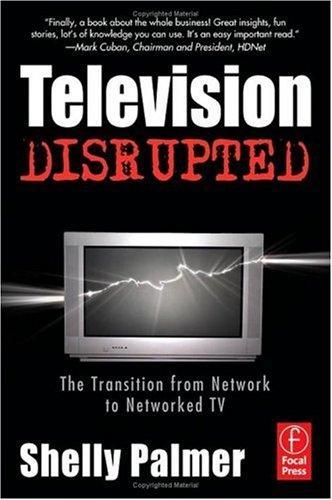
Television disrupted: the transition from network to networked TV
by
Shelly Palmer
Published 14 Apr 2006
Here’s a short list of the most popular telecommunications system formats: • from telephone companies over digital subscriber lines (DSL) from cable operators over their existing cable infrastructures using a Data Over Cable Service Interface Specification (DOCSIS) modems to provide the connection • from power companies using a system called broadband over power lines (BPL) from various wireless providers (some of whom are telephone companies) using systems like WiFi (802.11 specification) and WiMax (802.16 specification) and Evolution Data Optimized (EVDO) But, by definition, the list is incomplete. Telecommunications companies are constantly working to upgrade and improve their systems. There are also several types of fiber optic connections available: Fiber to the Premises (FTTP) or Fiber to the Home (FTTH) which are actually necessary for telephone companies (telcos) entering the IPTV business. And finally, there are industrial classes of service known as OC-carriers (Optical Carriers), T-carriers (E-carriers in Europe) and Digital Signals (DS), the generic descriptors for many classes of multiplexed u To view streaming video telecommunications systems.
…
Fox The Fox Networked, owned by News Corporation Frequency (Hz) Frequency is the measurement of the number of times that a repeated event occurs per unit time. To calculate the frequency, one fixes a time interval, counts the number of occurrences of the event within that interval, and then divides this count by the length of the time interval. Measured in Hertz (Hz). One Hertz is one cycle per second. FTTH Fiber to the Home — Fiber optic service to a node located inside an individual home. FTTP Fiber to the Pillow — Fiber optic service to a node located inside an individual home to specific locations, like a bedroom — more complicated and time consuming than just bringing the connection inside the house. GPRS General Packet Radio Service.
…
This fiber-optic telephone network will be several times more powerful and efficient than most existing cable networks, and it will allow the telco to sell-in a slightly differentiated triple-play bundle. However, it is not possible to estimate the short-term threat that telcos pose to cable. Firstly, they have to build the network. Telco executives estimate they can pass about 3 million homes per year. They won’t bring fiber-to-the-home to every household in America, but to reach 60 million households (a good competitive number), we’re still talking about 20 years. Homes passed has absolutely nothing to do with subscribers. It simply means that the telco has the ability to turn on the service if you decide to subscribe. No matter how you look at it, this is a multi-billion dollar gamble, but in their minds, the telephone companies simply don’t have a choice.
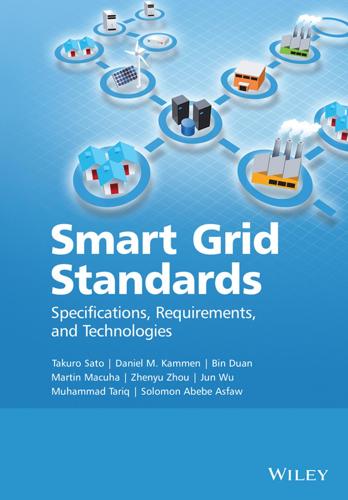
Smart Grid Standards
by
Takuro Sato
Published 17 Nov 2015
SDH’s STM-1 is equal to STS-3c/OC-3c, which is realized by multiplexing three STS-1 signals (interleaving the byte of the STS-1 frames) to form the next level of the SONET hierarchy. 6.3.2.2 FTTx and PON FTTx refers to Fiber-to-the-x, where x can be replaced by any letter, in dependence on the deployment and end point of the optical fiber network installation. It is mostly used to refer to the optical networks for last-mile communication and out of many “FTT”s (e.g., FTTP (Fiber-to-the-Premises), FTTC (Fiber-to-the-Curb), FTTD (Fiber-to-the-Desk)) the most widely known term is Fiber-to-the-Home (FTTH) and Fiber-to-the-Building (FTTB). FTTx architecture can be realized by various ways of distribution of the optical fiber links at the end points. In Active Optical Networks (AONs), the optical signal is usually distributed between several endpoints by active (powered) equipment realizing optical-electrical transformation, switching, or routing to the proper interface and again converting back to the optical light in order to be sent to the Optical Network Terminal (ONT).
…
Index 460 Complementarities, 364, 371–373, 375 Component Interface Specification (CIS), 98, 101 Compressed Air Energy Storage (CAES), 146, 148 Concentrating Solar Power (CSP), 35, 44 Conceptual Reference Model (CRM), 339 Confidentiality, 301, 318, 342 Conventional backup capacity, 367, 368, 370, 373, 375, 384, 387 Co-production, 64 Counter (CTR), 307, 309 Control Center API (CCAPI), 97 Cybersecurity, 16, 18, 19, 342 Cyclic Redundancy Check (CRC), 310 Data Attribute (DA), 85 Data concentrator, 189 Data Link Layer (DLL), 303 Data Object (DO), 85 Decarbonizing scenarios, 357 Demand Response (DR), 183, 184, 259, 293 Demand Response and Load Control (DRLC), 187 Demand Response and Smart Grid Coalition (DRSG), 13 Denial of Service (DoS) attack, 301 Data Encryption Standard (DES), 312 Device Language Message Specification (DLMS), 191 Digital Subscriber Line (DSL), 266 Direct combustion, 68 Direct Load Control (DLC), 184 DISPOWER, 22, 159 Distributed Denial of Service (DDoS) attack, 301 Distributed Energy Resources (DERs), 145, 154, 248 Distributed power generation, 37 Distribution grid management, 344 Distribution Management System (DMS), 79 Eavesdropping, 301 ECHONET, 184, 224 EDGE, 287 EDISON, 25, 169 Electric Storage (ES), 145, 184, 187, 242 Electric Storage-Distributed Energy Resource (ES-DER), 151 Electric transportation, 342 Electric Vehicle (EV), 145, 184 Electric Vehicle Batteries (EVB), 164 Electric Vehicles (EV), 145 EMIX (Energy Market Information Exchange) 1.0, 187 Energy capacity, 364–370, 372, 375 Energy density, 164, 166 Energy dumping, 354, 364, 366, 369, 370, 384, 390 Energy Management System Application Program Interface (EMS-API), 98, 99 Energy Management Systems (EMS), 149, 186 Energy Service Interface (ESI), 149, 186, 208, 215 Energy storage, 379, 381, 382, 389 Energy-to-weight ratio, 164 Enhanced Geothermal System (EGS), 64 EtherCAT, 303, 324 Ethernet, 82, 84, 115 Ethernet powerlink, 303 EUC, 319 EU-DEEP, 159 EUI-64, 304, 309 European Committee for Electrotechnical Standardization (CENELEC), 8 European Committee for Standardization (CEN), 8 European Installation Bus (EIB), 235 EV-DO, 288 Fast DR, 184 Feeder Terminal Unit (FTU), 126 Fiber-to-the-home FTTH, 266 Framework Programme (FP), 159 Index Fuel cell, 56, 59, 60 Function set, 215 G3-PLC, 251, 262 G4V, 179 Gasification, 68 Generic Object Oriented Substation Event (GOOSE), 82 Generic Substation Event (GSE), 84 GEO satellite systems, 291 Geo-pressured, 64 Geothermal energy, 60, 63, 64 Geothermal ground, 64 Global smart grid federation, 14 GPRS, 287 Grid flexibility, 362, 364, 366, 387 Grid integration, 352, 374, 381 Grid to Vehicle (G2V), 146, 166 GridWise alliance (USA), 14 GridWise Architecture Council (GWAC), 12 Global System for Mobile Communication (GSM), 254, 272, 286, 287 Hidden terminal problem, 279 Highly elliptical orbit, 291 Home Area Network (HAN), 189, 214 Home Electronic System (HES), 184, 198 Home Energy Management System (HEMS), 227 Homegrid Forum (HGF), 12 HomePlug, 262 HomePlug AV HomePlug AV2, 263 Homeplug powerline alliance, 11 Highn speed packet access HSPA+, 286 Hypertext Transfer Protocol (HTTP), 105 Human Machine Interface (HMI), 84 Hybrid Electric Vehicles (HEVs), 163 Hydroelectric power, 37, 38, 40 Hydroelectric Pumped Storage (HPS), 146 Hydrogen, 59 Hydrogen fuel cell, 59 Hydropower, 35, 37 461 Hydropower plants, 38 Hydropower standards, 40 Hydrothermal, 64 IEC 60834, 106 IEC 60870, 88, 126 IEC 61508, 319 IEC 61850, 82 IEC 61968, 102 IEC 61970, 97, 125, 126 IEC 62351, 316 IEC 61784–3, 302 IEC SC65C/WG12, 301 IEDs, 82 IEEE 802.11, 254 IEEE 802.15.4, 304, 309 IEEE 802.22, 283 IETF, 312 iGREENGrid, 159 Internet Inter-ORB Protocol (IIOP), 105 IMT-advanced, 289, 290 India smart grid forum (India), 14 Information Exchange Model (IEM), 105 INSTEON, 235, 238 Institute of Electrical and Electronics Engineers (IEEE), 7 Integrity, 314, 318, 321, 342 Interchangeability, 330 Inter-control center communications protocol, 93 Interface Reference Model (IRM), 103 Intermittent renewable sources, 410 Internal Combustion Engines (ICE), 161 International Atomic Time (TAI), 309 International Electrotechnical Commission (IEC), 4 Telecontrol Application Service Element 2 (TASE.2), 93 International Energy Agency (IEA), 12 International Organization for Standardization (ISO), 6 International Telecommunication Union (ITU), 7 Internet Engineering Task Force (IETF), 2 Internet protocol, 257 Index 462 Interoperability, 248 IPsec, 213 IRED, 159 ISA100.11a, 278 ISO 9506, 95 ISO/OSI, 87 NB-PLC, 259 Near field communication, 274 Netricity, 251 Network energy capacity, 367, 368 Network Layer (NL), 303 Non-repudiation, 318 Japan smart community alliance, 14 Object Identification System (OBIS), 192 ONE-NET, 238 OPC UA, 324 OpenHAN 2.0, 217 Open V2G, 179 Operational policy, 372, 373 Optical fiber networks, 264 Organization for the Advancement of Structured Information Standards (OASIS), 11 Out-Of-Band (OOB), 304 KNX, 261 LEO satellite system, 291 Local Area Networks (LANs), 82 Logic Device (LD), 85 Logic Node (LN), 85 LONMARK, 234 LONTALK, 233 LONWORKS, 233 LTE Long term evolution, 289 Machine-to-machine M2M, 269 MACsec, 311 Man-in-the-middle attack, 301 Manufacturing Message Specification (MMS), 82 Master Data Telegram (MDT), 313 MERGE, 179 Meter Data Management System (MDMS), 189 MHR, 309 MIC, 305, 307 MICROGRIDS, 159 MMIC, 322 MOLECULES, 179 Molten Carbonate Fuel Cell (MCFC), 155 Multimode, 264 Passive optical networks, 252 Payload Data Unit (PDU), 307 Phase Change Materials (PCMs), 150 Photovoltaic (PV), 35 PKI, 319 Plug-in Electric Vehicle (PEV), 177, 187 Plug-in Hybrid Electric Vehicles (PHEVs), 147 Power capacity, 364–366, 369, 372 Power control center, 80 Power grid, 79 Power line communication, 263 Power-to-weight ratio, 164 PRIME, 261 Process layer, 84 PROFIBUS/PROFINET, 311 PROFIsafe, 302 Proton Exchange Membrane Fuel Cell (PEMFC), 155 Pumped Hydro Storage (PHS), 146, 147 Narrowband PLC, 251, 260 National Electrical Manufactures Association (NEMA), 11 National Institute of Standards and Technology (NIST), 7, 264 Radio frequency identification RFID, 270 Range anxiety, 161 Registration Process (RP), 221 RPL, 258, 259, 283 Index Safety integrity level, 322 Sampled Measured Values (SMV), 82 Sampling value (SV), 85 Satellite communication, 291 SCL, 111, 112 SDH, 265 Single-mode, 264, 265 Slow DR, 184 Smart Energy Profile (SEP) 2.0, 187 Smart Grid Interoperability Panel (SGIP), 14 Smart home and building automation, 183, 197 Society of Automotive Engineers (SAE) international, 7 Solar energy, 40 Solid Oxide Fuel Cell (SOFC), 155 SONET, 265 Specific Communication Service Mapping (SCSM), 84 Storage design and dispatch, 366 Storage usefulness, 365 Substation, 84–85 Substation layer, 84 Superconducting Magnetic Energy Storage (SMES), 147 Supervisory Control and Data Acquisition (SCADA), 80 SWITCH, 357 Symmetric channel model (BSC), 111 System Interface Exchange Descriptions (SIED), 128 TCP/IP, 79 Technical Committee 57 (TC57), 82 Telecommunications Industry Association (TIA), 8 Thermal Energy Storage (TES), 150 Time stamp, 310 UCA International Users Group (UCAIug), 10 Ultra capacitors, 150 UMTS, 288 463 Unified Modeling Language (UML), 174 United States Advanced Battery Consortium (USABC), 164 Unlicensed spectrum, 275, 283 Variability, 354, 356, 372, 375 Vehicle-to-Grid (V2G), 170 Very high penetration, 384 Virtual Consecutive Number (VCN), 316 Virtual End Node (VEN), 187 Virtual Power Plant (VPP), 145 Virtual Private Network (VPN), 318 Virtual Top Node (VTN), 189 Virus, 318 VSAT Very small aperture terminal, 292 WAVE2M, 258 WCDMA Wideband CDMA, 288 Weightless, 283 Wide Area Networks (WANs), 205 Wide Area situational awareness, 341 Wi-Fi, 9 Wi-Fi alliance, 9 WiMAX 10 IEEE 802.16, 290 Wind energy, 51, 54 Wind turbine, 52 Wired communication, 321, 322 Wireless standards, 268 Wireless technologies, 270 WirelessHART, 278 Worldwide Interoperability for Microwave Access (wimax) forum, 10 X10, 235, 239 XML, 128 ZigBee, 277 ZigBee alliance, 10 ZigBee Home Automation (ZHA), 228 Z-Wave, 221, 224, 333 WILEY END USER LICENSE AGREEMENT Go to www.wiley.com/go/eula to access Wiley’s ebook EULA.
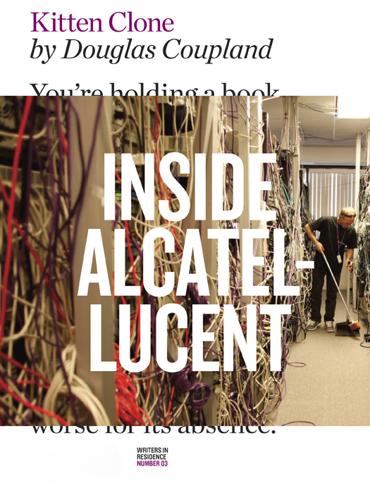
Kitten Clone: Inside Alcatel-Lucent
by
Douglas Coupland
Published 29 Sep 2014
Weldon started work on fiber-based Broadband Access technologies and, in 2005, became the CTO for Broadband Solutions business group in Lucent Technologies, with responsibility for wireline Access Networks and IPTV. He was subsequently appointed as CTO of the Fixed Access Division and the Wireline Networks Product Division in Alcatel-Lucent following the merger of Alcatel and Lucent in December 2006, with responsibility for xDSL and FTTH, IPTV, Home Networking and IMS. The two of us quickly fall into a discussion about modern communications. Weldon points out that, in 1995, “Nobody in Bell Labs used the Internet. People used UNIX command-line addresses.” UNIX is a computer operating system invented by Bell Labs in 1969. “I’m surprised by how quickly the Internet became huge, and the amount of personal trivia people share with each other comes as a total surprise.”

The Autonomous Revolution: Reclaiming the Future We’ve Sold to Machines
by
William Davidow
and
Michael Malone
Published 18 Feb 2020
The American Society of Civil Engineers (ASCE) has estimated that the country has a $3.6 trillion backlog and it is planning to spend only $2 trillion by 2020.44 Completing the projects identified by the society in a five-year period would require spending an additional $300 billion a year, or about 2 percent of GDP. The projects identified by the ASCE represent only a fraction of what has to be done to create a robust twenty-first-century infrastructure. Providing 100 million households with FTTH (fiber to the home) would require an investment of between a quarter and a half-trillion dollars—and that’s just the tip of the iceberg.45 Massive investments in public transportation are needed—things like high-speed rail, and possibly even hyperloops that would allow trains to travel at the speed of sound.46 Substantial portions of our cities and suburbs will need to be retrofitted or rebuilt from scratch.
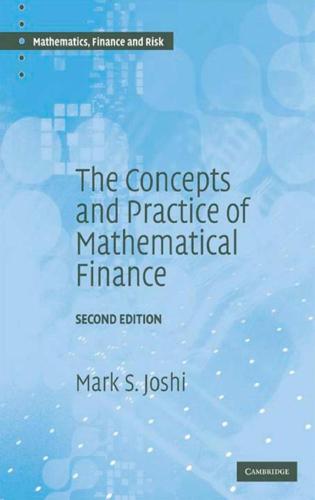
The Concepts and Practice of Mathematical Finance
by
Mark S. Joshi
Published 24 Dec 2003
We wish to do something similar for random variables. We therefore examine the behaviour of Xt+14 - Xt as h tends to zero. We can write .(r) = A(t) + e(r), a2(r) = a2(t) + .f (r) where e and f vanish at r = t. We then have that t+/i Xt+h - Xt = hµ(t) + J e(r)dr + h112a(t)N(0, 1) + g(t, h)N(O, 1), (5.5) t where g(t, h) = (ha(t)e + ftt+h f (r)dr)112 - h1/2a(t). The important thing here is that the second and fourth terms are small as h goes to zero. To see this, note that 5.4 Stochastic processes 105 the second term is o(h) since e(t) = 0 and e is continuous because µ is. Moreover, we can rewrite g as 1/2 r+z h1/2a(t) ((i+ h-1 a(t)-2 f f (r)dr -1 r Recall the binomial expansion which says that for x small (1 + X)112 = 1 + Zx + 0(x2), (5.6) where 0(x2) means that the error is less than Cx2 for x small and some number C.
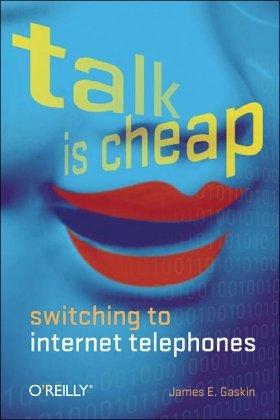
Talk Is Cheap: Switching to Internet Telephones
by
James E. Gaskin
Published 15 Mar 2005
Jeffrey Citron, CEO of Vonage, Inc., told me the incumbent phone companies "proved they will abuse their market power to keep their high pricing. They're not acting in the best interests of their customers, so that's why they're heavily regulated. If they want to get out of their regulated business, they can build out the fiber to the home networks they promised, because those are nonregulated businesses for them." Every step of the way, incumbent phone companies fought Internet Telephony proponents rather than innovating new technology. In fact, the standard line is that while Internet phone companies hired engineers, the remnants of the original AT&T network hired lawyers.
…
Jeffrey Citron, CEO of Vonage, Inc., told me the incumbent phone companies "proved they will abuse their market power to keep their high pricing. They're not acting in the best interests of their customers, so that's why they're heavily regulated. If they want to get out of their regulated business, they can build out the fiber to the home networks they promised, because those are nonregulated businesses for them." Every step of the way, incumbent phone companies fought Internet Telephony proponents rather than innovating new technology. In fact, the standard line is that while Internet phone companies hired engineers, the remnants of the original AT&T network hired lawyers.
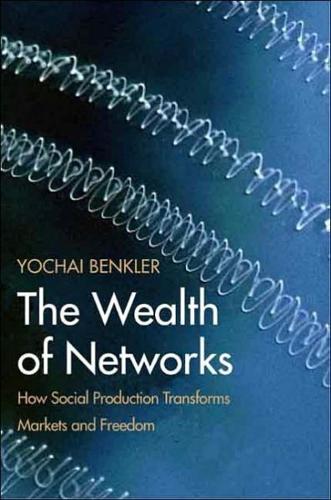
The Wealth of Networks: How Social Production Transforms Markets and Freedom
by
Yochai Benkler
Published 14 May 2006
Most of the efforts have indeed been phrased in these instrumental terms. The initial drive has been the creation of municipal fiber-to-the-home networks. The town of Bristol, Virginia, is an example. It has a population of slightly more than seventeen thousand. Median household income is 68 percent of the national median. These statistics made it an unattractive locus for early broadband rollout by incumbent providers. However, in 2003, Bristol residents had one of the most advanced residential fiber-to-the-home networks in the country, available for less than forty dollars a month. Unsurprisingly, therefore, the city had broadband penetration rivaling many of the top U.S. markets with denser and wealthier populations.
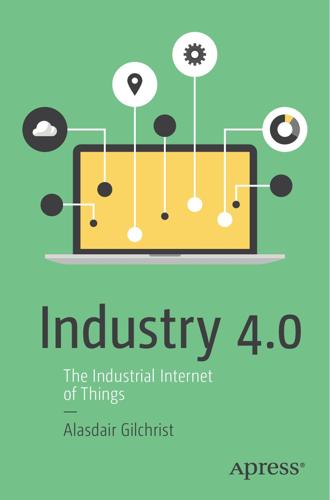
Industry 4.0: The Industrial Internet of Things
by
Alasdair Gilchrist
Published 27 Jun 2016
DWDM is used typically in service provider backbones, mobile core networks, metro-Ethernet networks, and even for connecting enterprise data centers using layer-2 switching over DWDM. DWDM is the premier highcapacity, high-performance transport mechanism today and it is becoming popular for short and medium pointto-point links as well as for long distance core rings. • FTTX—Fiber to the home/curb/street are all variants of a service provider’s fixed-line WAN portfolio for bringing high performance applications, such as IPTV and triple play, over fiber to the premises. Fiber optic cable have almost unlimited capacity and throughput with data travelling at the speed of light through the glass conduit within the fiber cable.

Smart Cities: Big Data, Civic Hackers, and the Quest for a New Utopia
by
Anthony M. Townsend
Published 29 Sep 2013
National Association of Telecommunications Officers and Advisors (NATOA) 25th Annual Conference, Washington, DC, September 22, 2005, http://www.ftc.gov/speeches/leibowitz/050922municipalbroadband.pdf. 7Christopher Mitchell, Broadband at the Speed of Light: How Three Communities Build Next-Generation Networks (Washington, DC: Institute for Local Self-Reliance, April 2012, http://www.ilsr.org/wp-content/uploads/2012/04/muni-bb-speed-light.pdf. 8Dave Flessner, “Chattanooga area’s economic outlook brightens,” Chattanooga Times Free Press, last modified December 29th, 2011, http://www.timesfreepress.com/news/2011/dec/29/economic-outlook-brightens. 9Fiber-to-the-Home Council of North America, “Municipal Fiber to the Home Deployments: Next Generation Broadband as a Municipal Utility,” October 2009, http://www.baller.com/pdfs/MuniFiberNetsOct09.pdf. 10Claudia Sarrocco and Dimitri Ypsilanti, “Convergence and Next Generation Networks: Ministerial Background Report,” Organisation for Economic Co-operation and Development, June 17, 2008, http://www.oecd.org/internet/interneteconomy/40761101.pdf. 11Christopher Mitchell, “Oregon Town To Build Open Access Fiber Network Complement to Wireless Network,” Community Broadband Networks, last modified July 25, 2011, http://www.muninetworks.org/content/oregon-town-build-open-access-fiber-network-complement-wireless-network. 12Thierry Martens, remarks, Ideas Economy: Intelligent Infrastructure, The Economist, New York City, February 16, 2011. 13Andrew Comer and Kerwin Datu, “Can you have a private city?

MacroWikinomics: Rebooting Business and the World
by
Don Tapscott
and
Anthony D. Williams
Published 28 Sep 2010
Broadband connections to the home are becoming much faster and able to carry a signal that can fill a large-screen television with a high-definition image. This desire for a fast connection is relentless. Earlier this year, Google announced it would build trial ultra-high-speed broadband networks in a small number of locations across the United States. The project promised fiber-to-the-home Internet speeds of 1 gigabit per second, more than one hundred times faster than what most Americans have today. At this speed, a high-definition movie can be downloaded in less than thirty seconds, which leaves cable and satellite TV twisting in the wind. Google said it planned to offer the service at a competitive price to at least 50,000 and potentially up to 500,000 people.36 More than 1,100 communities and almost 200,000 individuals across the country formally responded to say they wanted to be part of the project.37 Google is not alone in trying to put the Internet on steroids.